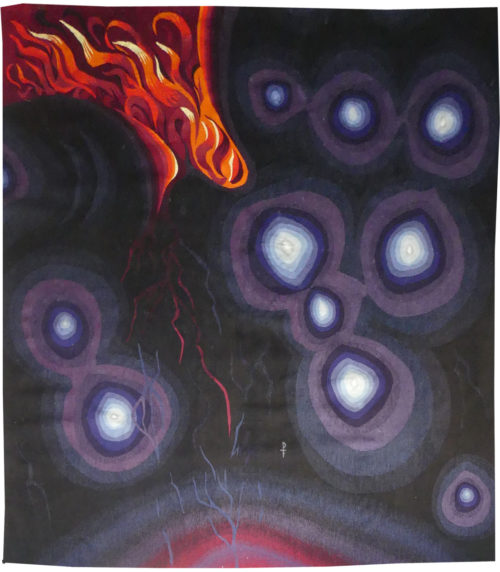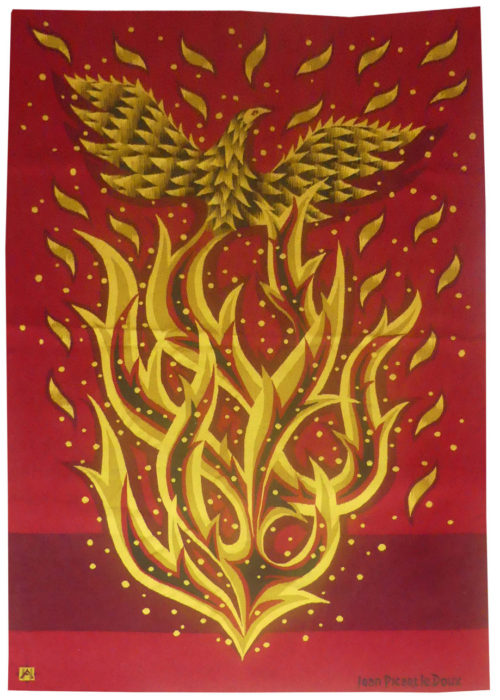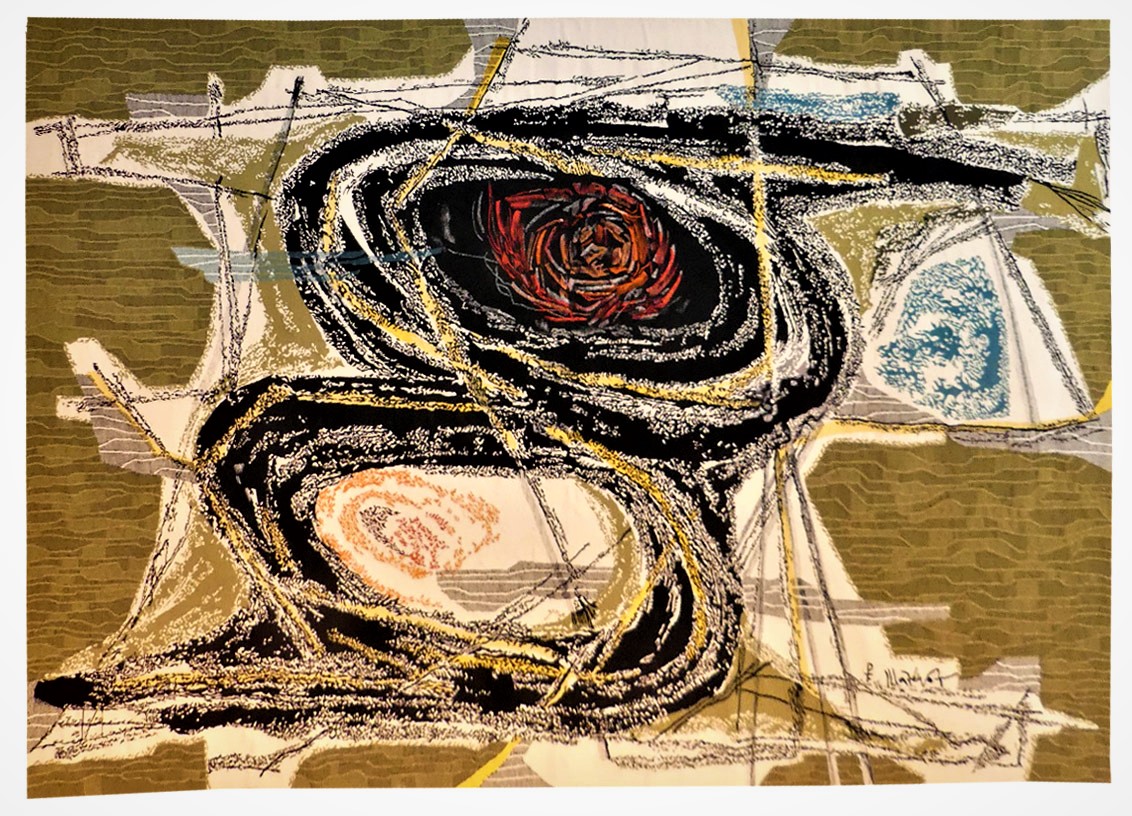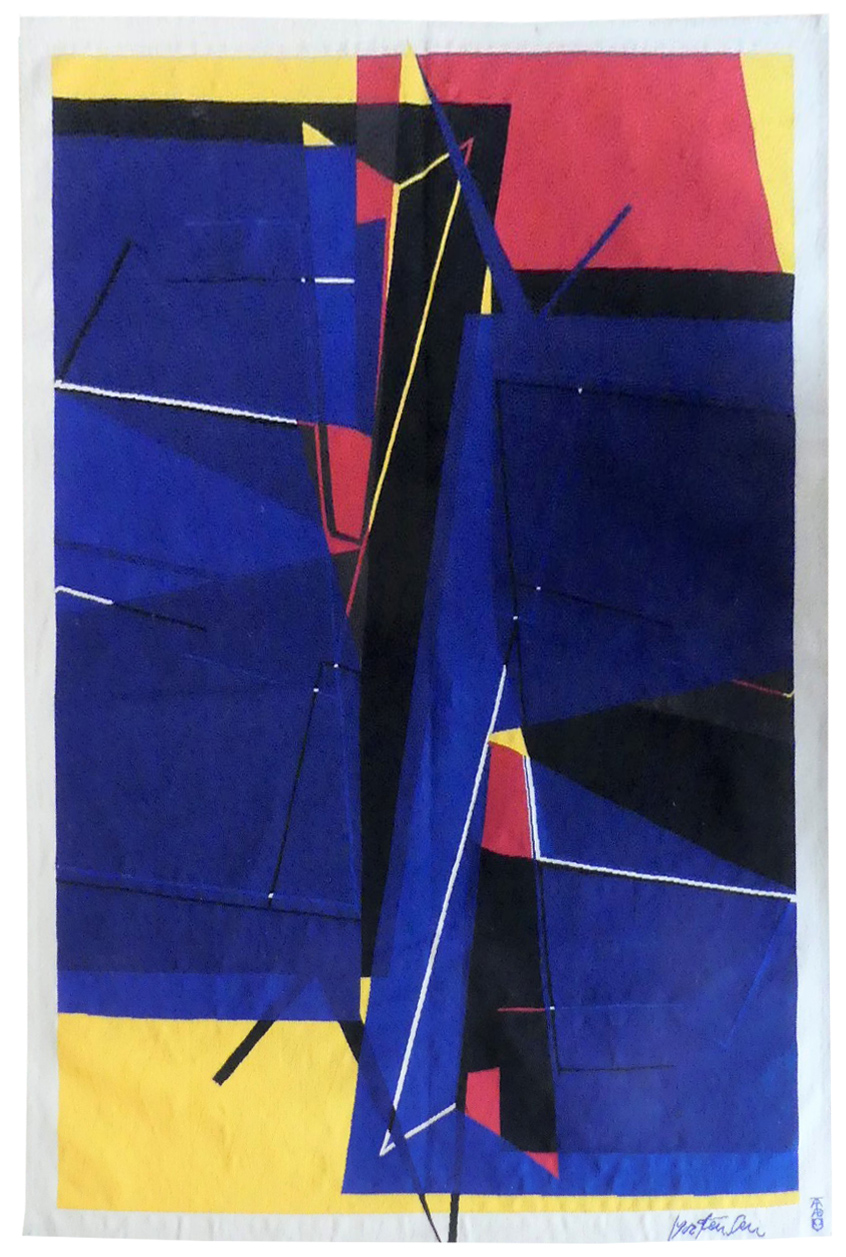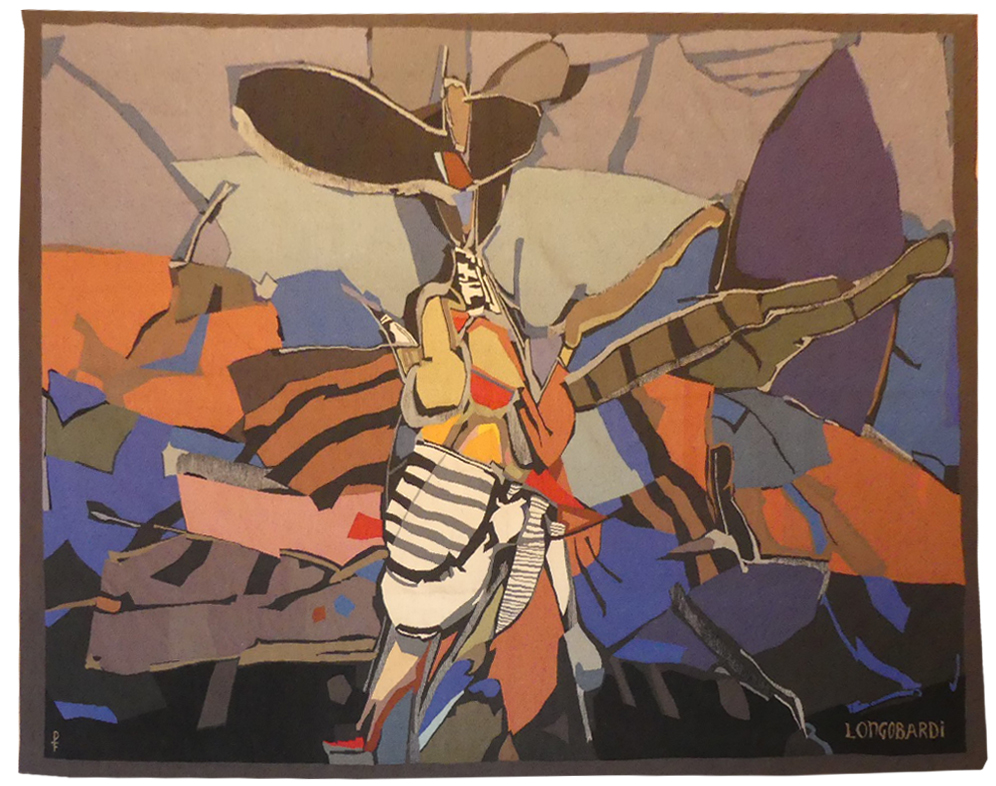-
Holger was a student at the Ecole Nationale d’Art Décoratif d’Aubusson and worked with Lurçat before the latter’s death in 1966. He designed numerous dream-like cartoons woven by the Aubusson workshop. Now settled in the United States, he remains a tireless advocate for, and witness to, modern tapestry design, organising exhibitions and lectures on the subject.
-
Le phénix (the phoenix)
Aubusson tapestry woven in the Hamot workshop. Complete with label signed by the artist, n°EA. 1965. Jean Picart le Doux is one of the foremost figures in the renaissance of the art of tapestry. His earliest contributions to the field date back to 1943 when he designed cartoons for the passenger ship “la Marseillaise”. A close associate of Lurçat, whose theories he would adopt (limited palette, numbered cartoons...), he was a founding member of the A.P.C.T. (Association des Peintres-cartonniers de Tapisserie), and soon after, a teacher at the Ecole Nationale Supérieure des Arts Décoratifs. The state gave him several commissions most of them at the Aubusson workshop, and some at the Gobelins : the most spectacular of these being for the University of Caen, the Theatre in Le Mans, the passenger ship France or the Prefecture of the Creuse département ... In as much as Picart le Doux’s aesthetic is close to that of Lurçat, so also is his inspiration and his subject matter, although in a register which is more decorative than symbolic, where he brings together heavenly bodies (the sun, the moon, the stars...), the elements, nature (wheat, vines, fish, birds...), man, literary quotation ... « Le Phénix » (The Phoenix) (An identical lithograph exists also), a subject inspired by legend (a rare event in the work of Picard le Doux) reproduces a chromatic harmony of yellow motifs against a red background typical of this particular artist. Bibliography : Maurice Bruzeau, Jean Picart le Doux, Murs de soleil, Editions Cercle d’art, 1972, ill. n°162 Exhibition Catalogue, Jean Picart le Doux, tapisseries, Musée de Saint-Denis, 1976 Exhibition Catalogue Jean Picart le Doux, Musée de la Poste, 1980 -
Aubusson tapestry woven by the Pinton workshop. With signed label, n°2/6. 1960.
-
Saint-Mars (composition blues black yellow red white)
From early on in his career, Mortensen, favoured an abstract painting style. He settled in Paris in 1947 and showed his works, with other artists also inclined to geometric abstraction, at the Denise René gallery. In 1952 under the aegis of François Tabard and Vasarely an exhibition titled « 12 original tapestries » opened at the gallery where, in the company of Le Corbusier and Léger, there appeared works by Deyrolle, Taueber-Arp and Mortensen who thus became the first abstract painters to be reproduced in tapestry and a new art form was born (in this context, it must not be forgotten that this is the period where the “Lurçat style” was absolutely dominant) which Gilioli, Matégot and Tourlière will all subsequently claim as their own. Mortensen’s collaboration with the “René-Tabard tapestries” will last until 1968, even though he returned to his native Denmark in 1964. The 14 works of the artist which will be woven are characterised by his large-scale geometrical compositions, using bright, light and contrasting colours in large expanses of colour, which the weavers of the Tabard workshop reproduce with great success. « One of the loveliest » of Mortensen’s tapestries according to Valentine Fougère (Tapisseries de notre temps, Paris 1969), « Saint Mars », a somewhat obscure title, derives directly from an engraving from 1962. The style which is wholly geometric, consisting of blocks of primary colour and surrounded by a frame, is characteristic of this artist’s style in the years 1961-2. This model, which was to be found both at the Mobilier National (bought from the Denise René gallery in 1963) and also at the Cité de la Tapisserie in Aubusson, was woven in 2 sizes : the dimensions of this copy correspond to that mentioned in the Cité. Origin : Denise René collection Bibliography : Madeleine Jarry, la Tapisserie, art du XXe siècle, Fribourg, 1974, ill. n°145 Exhibition catalogue, Aubusson, la voie abstraite, Aubusson, Musée départemental de la Tapisserie, 1993, ill. p.14 (on a photograph of a 1964 exhibition at the Denise René gallery) p.32 Acts of the colloquium, la tapisserie hier et aujourd’hui, Paris, 2011, ill. n°6 p.213 Visitor’s guide, nef des tentures, Cité internationale de la Tapisserie, Aubusson, 2016, ill. p.84Aubusson tapestry woven in the Tabard workshop.. With label. 1963. -
Composition
As a young painter moving towards abstraction in the late 40s, Longobardi was commissioned to paint large-scale murals in France and abroad (the presidency of the Republic of Abidjan, the rectorate of the Poitiers Academy, etc.), as well as numerous tapestry cartoons, in particular for the Manufactures Nationales, with sometimes very modern subjects (‘l'autostrade’, ‘l'aéroport’, etc.). Longobardi, along with Singier and Springer, was one of the very first abstract artists to receive public commissions at the time. Although his work was abstract, his aesthetic evolved over time, from sharp forms to a more lyrical style full of movement, until the appeasement of the 1960s. The high point of his meteoric official career came when he was commissioned to create ‘la crique’ for the starboard private dining room of the liner ‘France’. After this, the artist became much rarer. Our carton is stylistically close to the artist's latest weavings for the Manufactures Nationales, notably ‘Plein feu’ from 1963-1964. Bibliography : Cat. Expo. Le Mobilier National et les Manufactures Nationales des Gobelins et de Beauvais sous la IVe République, Beauvais, Galerie de la Tapisserie, 1997 Armelle Bouchet-Mazas, le paquebot France, éditions Norma, 2006, ill.p.170 Cat. Expo. Le chic ! Arts décoratifs et mobilier de 1930 à 1960, Paris, galerie des Gobelins, 2022-23Aubusson tapestry woven in the Pinton workshop. With label. Circa 1960.


